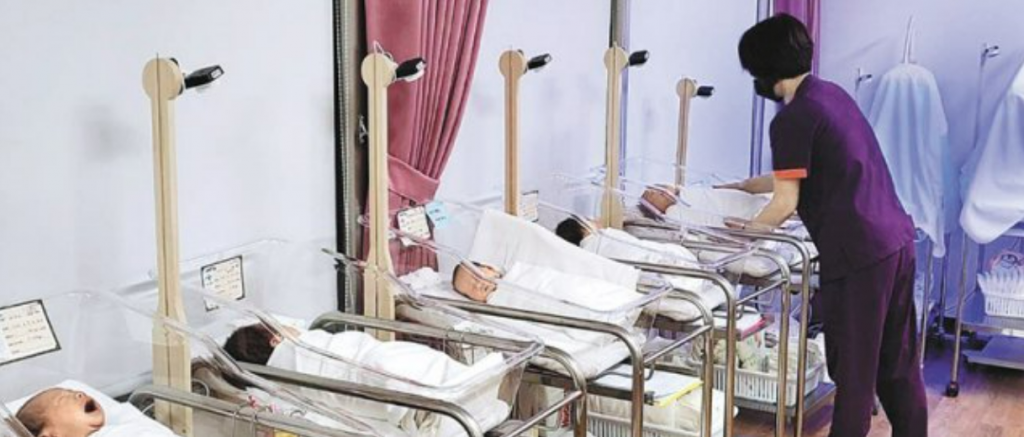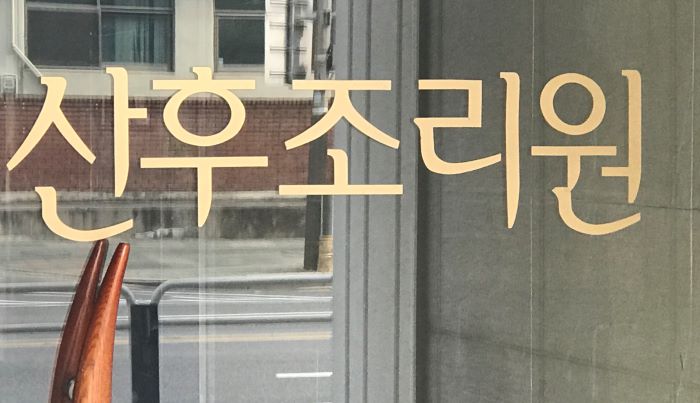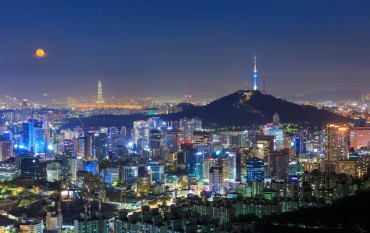
Medical staff take care of newborns in the neonatal unit of Haenam General Hospital’s postpartum center, the first public postpartum center in Jeollanam-do (Image courtesy of Jeollanam-do)
SEOUL, Sept. 8 (Korea Bizwire) —Over the past five years, there has been a significant decline in the number of postpartum nurses in Gyeonggi Province, with a reduction of 16 percent. This decline can be attributed to several factors, including the ongoing decrease in the birth rate and the challenges faced by businesses during the COVID-19 pandemic, which resulted in the closure of several postpartum centers.
According to a report from Gyeonggi Province released on Thursday, as of June of this year, there were a total of 144 postpartum centers across 24 cities and counties in the province, including two publicly operated postpartum centers.
In comparison to last year, the number of public postpartum centers increased by one, while private postpartum centers decreased in number by four.
However, when compared to the situation in June 2018, five years ago, when there were 172 centers in 25 municipalities, there has been a significant decrease of 28 centers, representing a decline of 16.3 percent.
It’s noteworthy that seven out of the 31 municipalities and counties in the province do not have any postpartum care centers, highlighting a regional disparity.
Meanwhile, the cost of a regular room (for a two-week stay) at a postpartum center in Seoul has risen substantially from 2.46 million won in June 2018, five years ago, to 3.25 million won. This increase of 790,000 won reflects a 32 percent rise in costs.
 While various factors contribute to the declining birth rate, the high prices associated with postpartum care centers are also seen as a significant burden that discourages women from considering childbirth.
While various factors contribute to the declining birth rate, the high prices associated with postpartum care centers are also seen as a significant burden that discourages women from considering childbirth.
In particular, the growing disparity between ultra-expensive luxury hotel-style postpartum centers and more affordable options has become a pressing social issue. It’s worth noting that the prices of postpartum care centers vary significantly across the country, with some centers costing as much as 29 times more than others.
According to data from the Ministry of Health and Welfare in the ‘Status of Postpartum Care Centers in the First Half of 2023′ report released on August 27, there were a total of 469 postpartum care centers nationwide as of the end of June.
This represents a decrease of six centers compared to last year, when there were 475.
Among these centers, the most expensive one in the country is the D Postpartum Center located in Gangnam-gu, Seoul, where a special room for a two-week stay costs a staggering 38 million won. The H Postpartum Center, also in Gangnam-gu, Seoul, follows closely with a price of 27 million won for a special room.
Remarkably, four out of the top five most expensive maternity homes are in Gangnam-gu, Seoul. The remaining one is the O Postpartum Center in Jongno-gu, Seoul, which charges 20 million won for a two-week stay in a private room.
On the other end of the spectrum, the most affordable maternity center in the country is the C Maternity Center in Cheongju, Chungcheongbuk-do, where a regular room costs 1.3 million won for two weeks, and a special room is priced at 1.6 million won.
The price difference between a regular room and the most expensive room at the D Postpartum Care Center is a staggering 29 times.
This growing social polarization, driven by economic difficulties, has been a recurring issue in the context of childbirth.
Lina Jang (linajang@koreabizwire.com)







